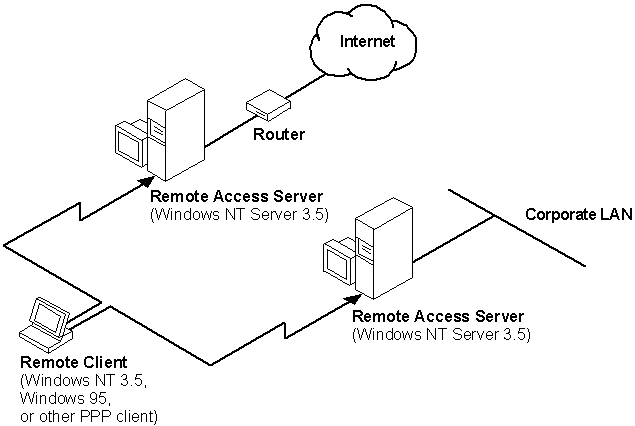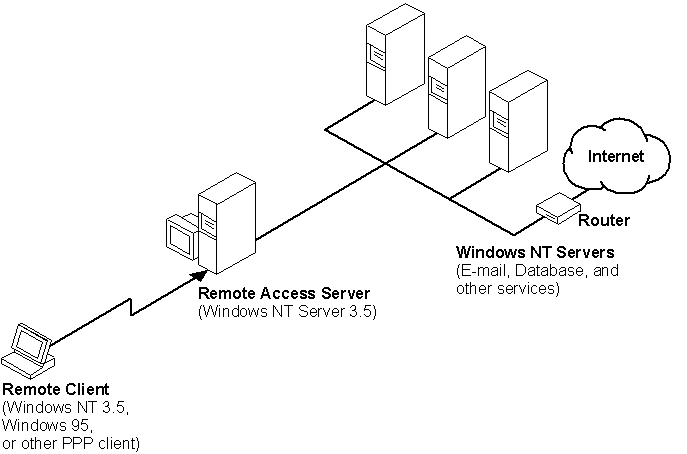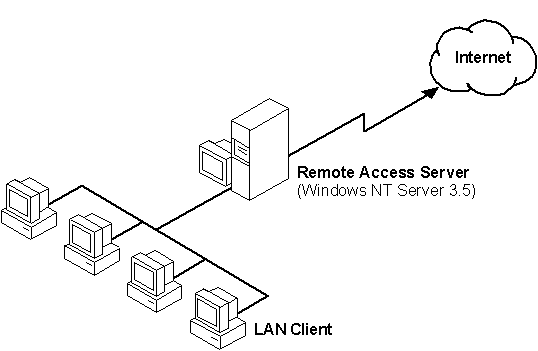
Perhaps the most exciting development in networking during the 1990's has been the explosive growth in Internet use. The latest figures indicate that over 20 million people have access to this world-wide network. The Internet's diverse services appeal to a broad spectrum of business people, academics, government users, and others. The Internet is the best model in existence today for the information superhighway of tomorrow.
Traditionally, connecting to the Internet has been a difficult process that is daunting for a beginner. Early tools, such as FTP and Telnet, featured character-based commands suited for the technical elite who knew how to connect and maneuver through the intertwined network with 32-bit IP addresses. Today's tools, such as Gopher and World Wide Web (WWW), provide front-end viewers that allow users to scan through and search for information without much knowledge of where information resides and without having to logon to the source computer.
With Windows NT and RAS, Microsoft provides an operating system that fully supports the Internet. There are several different scenarios for connecting to the Internet using Windows NT and RAS:

Figure 22.1 Microsoft's RAS Server with Direct Connections to the Internet

Figure 22.2 Acquiring a Shared Internet Connection and Value-Added Services

Figure 22.3 Using Windows NT Simple Internet Router Using PPP